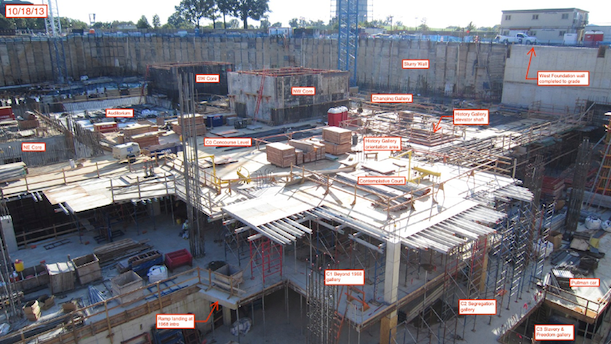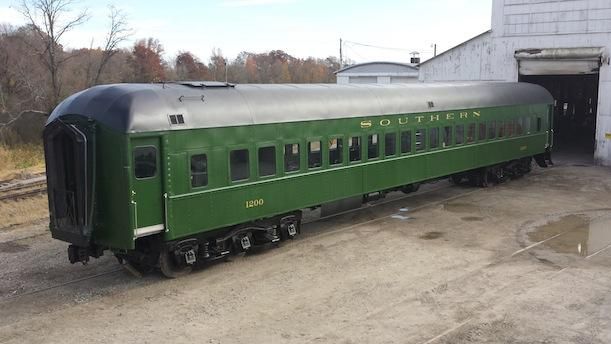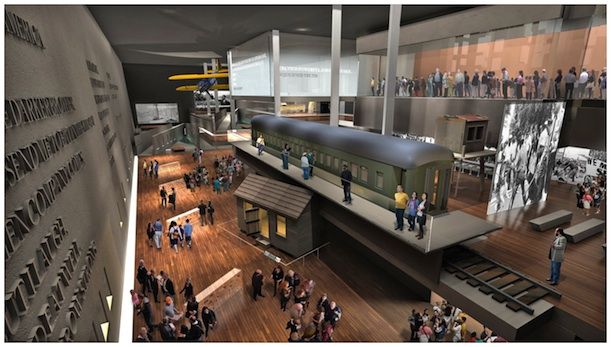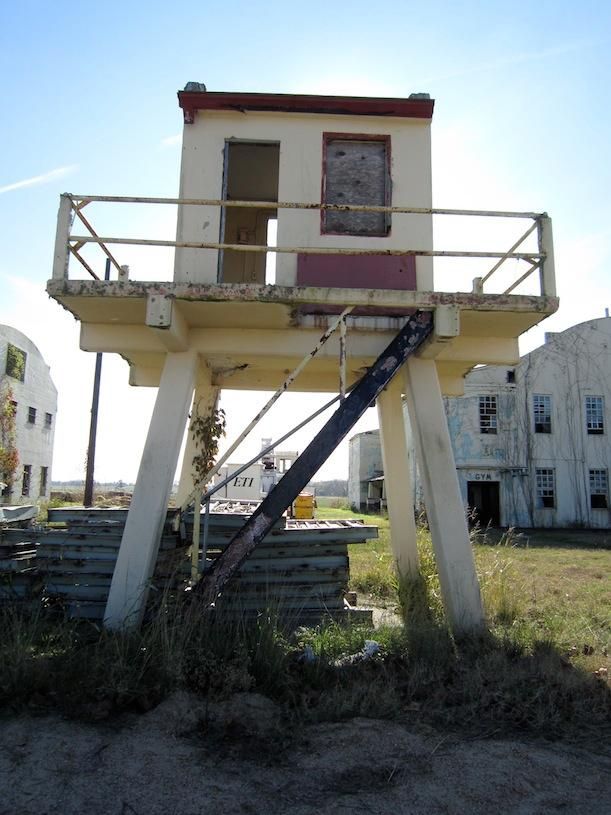Installing an Artifact in a Museum That Hasn’t Even Been Built Yet
This weekend, two objects are being installed in the National Museum of African American History and Culture—more than a year before it’s set to open
/https://tf-cmsv2-smithsonianmag-media.s3.amazonaws.com/filer/2013111512304020131105_1644071.jpg)
For many, the most poignant symbols of segregation during the Jim Crow era are the four men who refused to leave a Greensboro lunch counter or the arrest of Rosa Parks after she refused to give up her seat on a Montgomery City bus.
But segregation, says Spencer Crew, a curator for the National Museum of African American History and Culture, was everywhere—even airplanes and train cars. After 1900, all southbound trains were divided into sections for whites and blacks, the former with more room for men’s and women’s lounges, luggage and hat racks, and spacious restrooms.
The train car provides a vivid backdrop for the inaugural exhibition on segregation that the museum will open with in 2015. The only problem: the nine-decade-old, 44-seat Southern Railway car, donated by railway executive Pete Claussen and his company Gulf & Ohio Railways, won’t be able to fit through the door once construction is finished.
So on Sunday, the 153,900-pound passenger car, No. 1200, will dangle above the scaffold-ridden Washington skyline, lifted by cranes and then lowered onto the construction site on Constitution Avenue between 14th and 15th Streets—the first of two major artifacts that will be installed before the museum is built around it.
It’s the first time (as far as we can tell) artifacts have been installed into a Smithsonian museum before the building, or at least its shell, takes shape.
The George Washington in a toga statue by Horatio Greenough and the 1926 Pacific steam locomotive at the National Museum of American History and the Skylab at the National Air and Space Museum were put in place before construction was completed, Smithsonian curators say. But at American History, some walls had already been built around the artifacts, and at Air and Space, the roof was already up, making Sunday’s installation at the African American History Museum all the more unusual.

Crews on Sunday will also install a more than 21-foot guard tower from the Louisiana State Penitentiary, one of the largest maximum-security prisons in the country nicknamed “Angola” for the 19th-century plantation that once stood on its land.
After final touches are put on the artifacts next week, the rail car and tower will be covered by protective structures so construction can continue around them.
The event, which is open to the public, will close roads for six hours (see details below), but it’s a milestone five years in the making.
Pete Claussen and Gulf & Ohio Railways donated the railway car—first built in 1918 as an open-window coach—to the museum in 2009.

In 1940, it was renovated to create separate seating, lounges and restrooms for black and white passengers. But the car was not simply divided in half: to accommodate the larger luxuries in the white seating section, nearly two-thirds of the train was dedicated to white passengers, leaving only a third of car for the “colored section.”
Segregation on trains isn’t documented as it was in schools or at water fountains, visuals that endure as one of the practice’s most common symbols, said Spencer Crew, a curator for the National Museum of African American History and Culture, who noted Frederick Douglass was among those kicked off of trains for refusing to sit in the black passenger car.
“The ability, or inability, to travel is a critical issue,” Crew says, one he plans to explore in the museum’s first exhibit that will tell the story segregation between the years 1876 and 1968.
The train car was in storage at the Tennessee Valley Railroad Museum in Chattanooga, before it was acquired by the museum. Renovations began in 2012 in Stearns, Kentucky, in preparation of this year’s arrival in Washington, a process that required 20 different tradesman, from electricians to metalworkers and painters.
The car was in fairly good condition when work began, said John E. Rimmasch, the CEO of Wasatch Railroad Contractors, who was charged with restoring the artifact. After the structural elements had been secured, workers went through the car and restored everything from the hat racks to the paint colors.
Once the car is installed in the museum, visitors will pass through it as they move through the exhibit—giving them a chance to “internalize and feel what that was to walk from the white section of the car to the colored section of the car,” Rimmasch said.

The interior of the prison tower won’t be accessible to the public once the museum opens, but Crew says it will help drive home the exploration of white power and black incarceration in the mid-20th century, which he’ll also feature in the exhibit.
Before the Louisiana State Penitentiary was handed over to the state, the land was used as a plantation that drew its workers from prisoners leased by the state. As a prison, Angola earned a reputation for the corruption that ran rampant behind closed walls, “the nearest kin to slavery that could legally exist,” Patricia Cohen once wrote in the New York Times.
From the more than 21-foot tower, wardens kept constant watch over the mostly-black prisoners at the facility, “a reminder that there was a constant effort to control their lives,” Crew said.

“The tower—and its role in the penal system—are important to the story I’m telling about the power of the tower and trying to keep African Americans under the control of others,” Crew said.
The Louisiana State Penitentiary donated the tower and a prisoner cell to the museum in 2012. This past July, the tower was taken down from the prison’s “Camp H” and transported to Stearns, to join the rail car.
Together, they made a three-day journey in a seven-vehicle convoy to Washington, DC,where they will serve as rare reminders of what segregation actually felt like for much of the 20th-century, Claussen says.
“You learn that separate but equal was certainly separate but it wasn’t really equal and that’s one of the things this demonstrates,” he says. “There are very few tangible pieces of segregation left. . .there are so few things you can actually experience what segregation was like and this was one of them,” he says.
The tower and rail car are scheduled to arrive around 7 a.m. Sunday. Both objects will be lifted from trucks on Constitution Avenue with cranes and placed into the museum site. Constitution Avenue between 14th and 15th streets will be closed to pedestrians and vehicles throughout the event, which is expected to last from 7 a.m. to 1 p.m. For those who want to watch the installation take place, the objects will be visible from Madison Drive, between 14th and 15th streets.
/https://tf-cmsv2-smithsonianmag-media.s3.amazonaws.com/accounts/headshot/erica-hendry-240.jpg)
/https://tf-cmsv2-smithsonianmag-media.s3.amazonaws.com/accounts/headshot/erica-hendry-240.jpg)